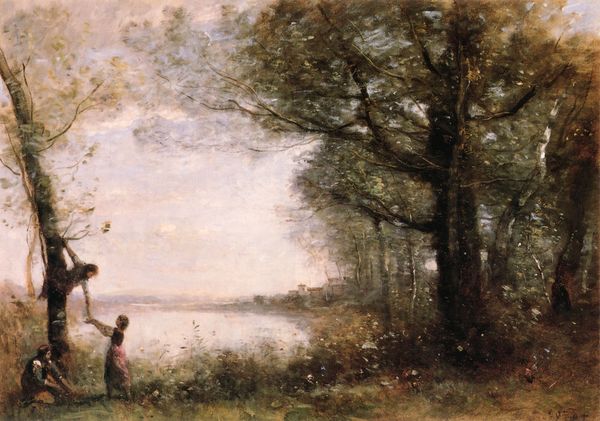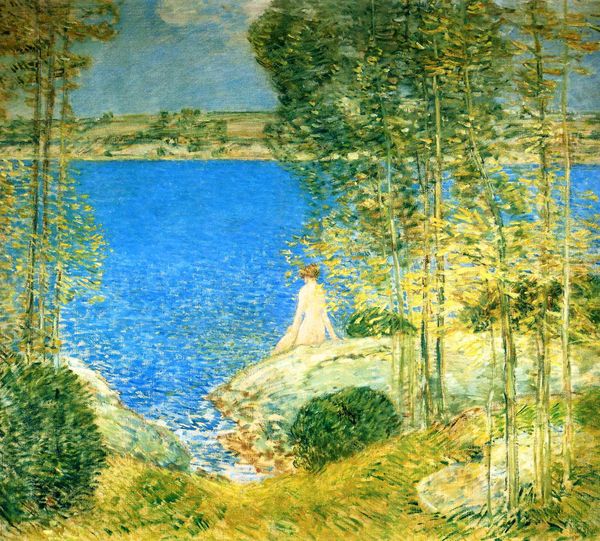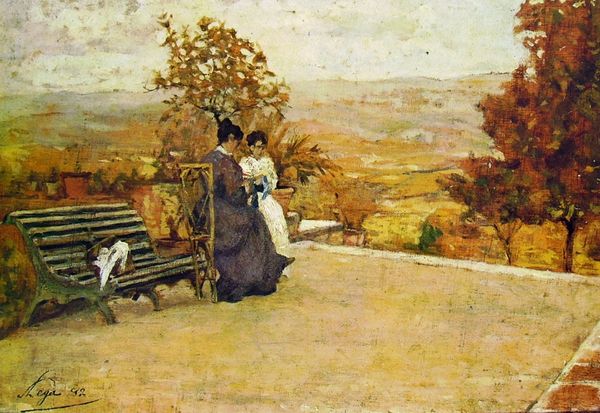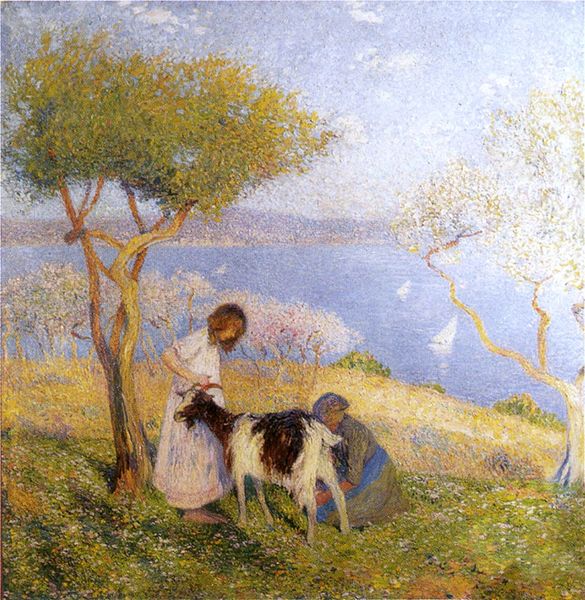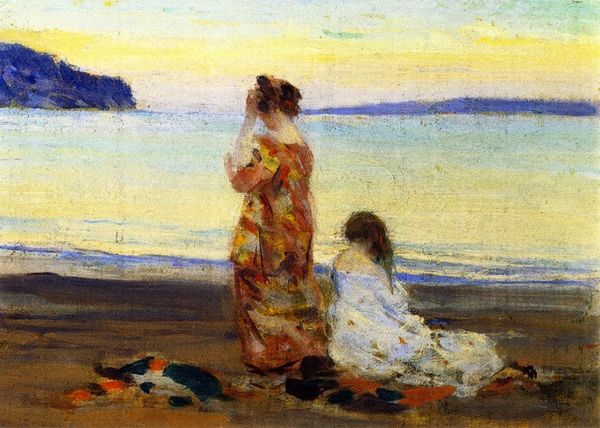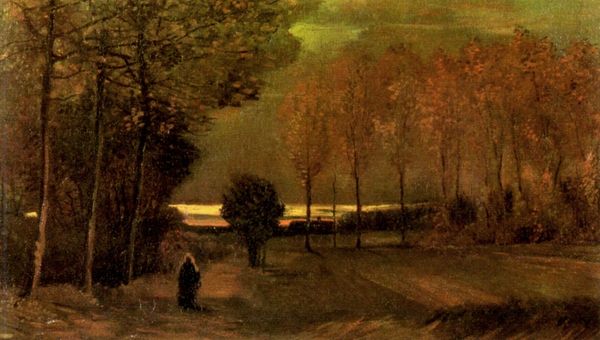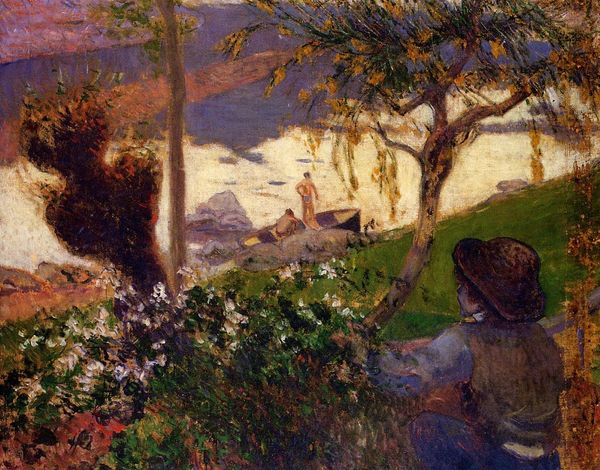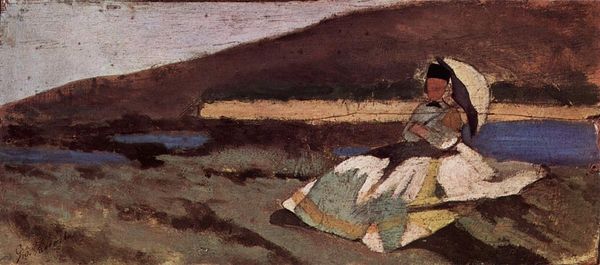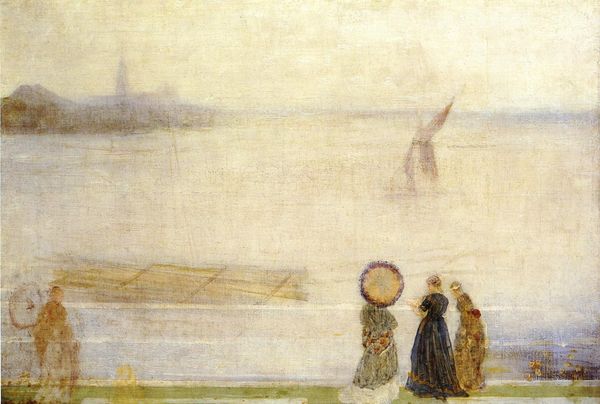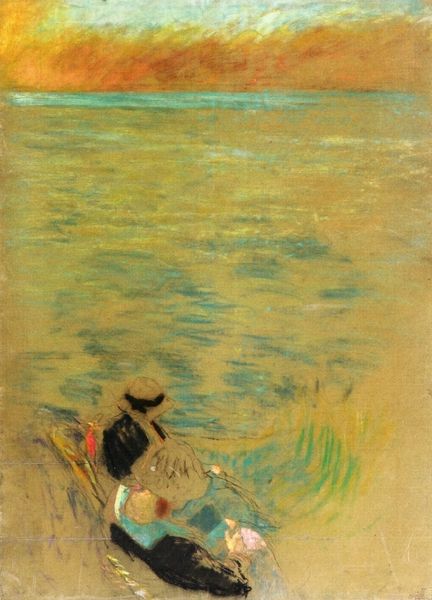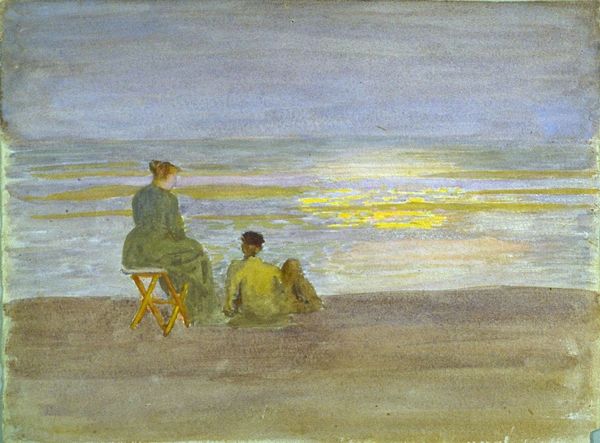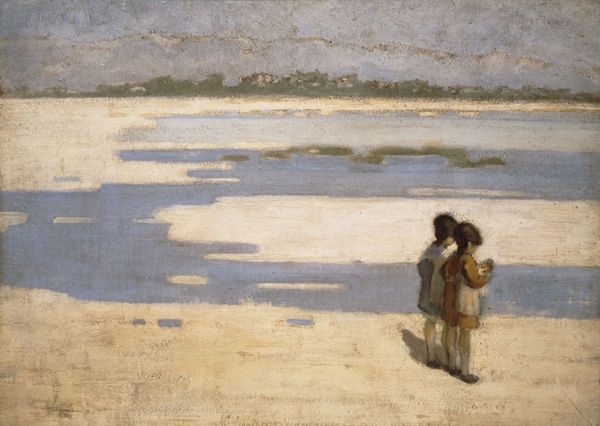
plein-air, oil-paint
#
portrait
#
impressionism
#
plein-air
#
oil-paint
#
landscape
#
impressionist landscape
#
figuration
#
oil painting
Copyright: Public domain
Editor: Here we have Tom Roberts' "Impression," created in 1888, employing oil paint in a plein-air style. It strikes me as quite peaceful; the figures seem contemplative within the landscape. What compositional elements stand out to you? Curator: Notice how Roberts manipulates the materiality of the oil paint. The visible brushstrokes don't merely depict; they construct. Observe the short, broken dashes of color in the foreground. How do they function? Editor: They seem to suggest movement, maybe wind through the grass, and also depth through their varying direction. They draw my eye to the figures. Curator: Precisely. The painting operates through a sophisticated play of light and texture. Roberts balances a darker figure on the left with the lightness of the figure in yellow. How does that relationship function compositionally, would you say? Editor: I see... it creates a kind of visual tension, a contrast that prevents the painting from feeling static, despite the tranquil subject matter. What about the lack of strong lines and defined forms? Curator: That dissolution of form is fundamental. Roberts prioritized capturing the ephemeral qualities of light and atmosphere. It's through this dematerialization that he achieves a sense of subjective experience, that feeling of “Impression.” Editor: So, the formal elements actively contribute to conveying the titular impression. I hadn't thought about the tension created through color before, it brings a new perspective on this work. Curator: Indeed. Formal analysis unveils layers of meaning often obscured by merely considering subject.
Comments
No comments
Be the first to comment and join the conversation on the ultimate creative platform.
